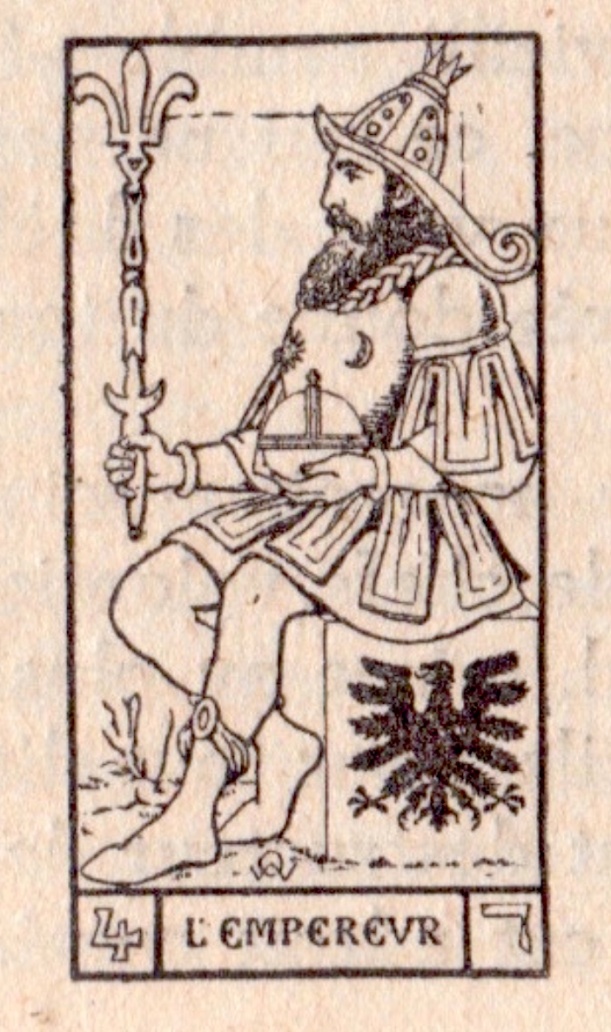Translator’s Introduction
From the supposed meaning, whether symbolic or cartomantic, of the Tarot cards taken in isolation to their combined values in a divinatory context, the search for meaning naturally extends to the sequential order of the cards, and from there, to structural considerations of a more or less greater profundity, and a more or less greater contrivance. Numerous elaborate theories detailing the supposed inner architecture of the Tarot have been proposed, typically with reference to the Kabbalah, to numerology, to astrology, or to a whole host of interpretations of varying worth and validity.
That is to say that the felicitous marriage of intelligence, insight, historical accuracy and plausibility is a rare bird in the vast literature on the Tarot. One case must be nonetheless be mentioned, the following piece by Yves Lévy, himself a specialist of medieval and Renaissance history and political theory, and a keen connoisseur of the Tarot.
[…]

The Emperor
Yves Lévy
Any work, any article at all whatsoever on the Tarot will teach you – if you were not already aware – that the Emperor is will. That is what arcanum IV will be for those who seek to divine the future. It is true that the Tarot is older than its divinatory use, which only dates back to the latter half of the eighteenth century, according to Henri-René d’Allemagne. This series of strange images was first of all a game of cards (but our deck of ordinary playing cards is also used for divination – and more frequently than the Tarot – without having been designed for that purpose). It is also in the eighteenth century, it would seem, that questions began to be asked as to whether these figures – especially those of the major arcana – did not possess some hidden meaning, and perhaps the most fascinating of all hidden meanings: a general interpretation of the universe. On this subject, minds raced, and immediately one commentator sprang all the way back to ancient Egypt, and evokes the mysterious learning of its priests, finds it within the images of the Tarot, and traces out the outlines of a hypothetical transmission of the mystical dictionary in twenty-two articles. Since then, the world of culture is divided on the subject: some believe in the Tarot, and strive to pierce its secret, the greater part do not believe in it and deliberately ignore it.
And yet, one must explain the Tarot all the same. This is a challenge thrown down to us. It is all too easy to turn one’s head away. One would have to be able to deny it. And how could we deny it without having explained it? In order to deny or to affirm, one must explain the Tarot.
